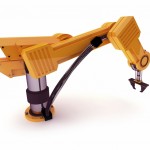 The cottage industry was based on workers buying raw materials, bringing them home and producing hand-crafted items to sell. The system worked, but was slow, tedious and expensive, producing goods that were affordable only by the rich.
The cottage industry was based on workers buying raw materials, bringing them home and producing hand-crafted items to sell. The system worked, but was slow, tedious and expensive, producing goods that were affordable only by the rich.
 The Industrial Revolution changed all that. The factory system brought machines and workers into factories that reliably and quickly produced mass quantities of items at a much lower cost.
The Industrial Revolution changed all that. The factory system brought machines and workers into factories that reliably and quickly produced mass quantities of items at a much lower cost.
You can easily see the connection to the analytical process. Too often today, the analytics process is run like a cottage industry: Workers get raw data from IT, analyze it in silos and produce predictive insights for their individual business units.
This is traditional analytics and was often "build as you go,” resulting in a hodge-podge of process, infrastructure and data. Too much effort is spent on data preparation and results integration, and not enough on investigation and fine-tuning statistical analysis and models.
Although insights produced by traditional analytics can be excellent, the level of quality is inconsistent. Each analytical process is different, and without consolidation and standardization, the production of analytics can’t easily scale to meet high demand and rapidly changing business needs.
In addition, with traditional analytics, innovation is rare because siloed analysts lack the time for data exploration, “what if” analysis or investigating new modeling techniques and processing technologies.
But there are solutions available to help industrialize and expand your analytics programs. If we apply the factory system to analytics, it’s composed of:
- An analytics lab to investigate, fail fast and innovate in order to solve emerging business problems through new data modeling and processing techniques.
- An analytics factory to standardize, consolidate and streamline the infrastructure, data and models through shared and consistent hardware, software and skills.
- An analytics store to offer self-service analytics to business lines and tailor it easily to a rapidly changing market
These three analytics initiatives may have a direct impact on the cost, efficiency and therefore effectiveness of business analytics. A few mature organizations, especially in the financial services industry, have already invested in this approach. As a result, they’ve cut infrastructure costs in half and doubled the productivity of their analytics process.
To dig further into the benefits of innovation in the analytical process, please look at this Global Data and Analytics executive study and research report from MIT Sloan Management Review and SAS Institute.
